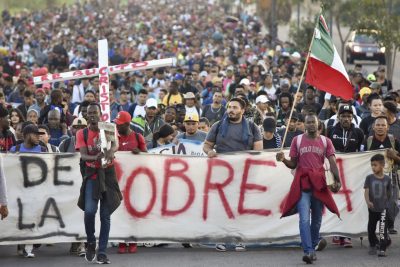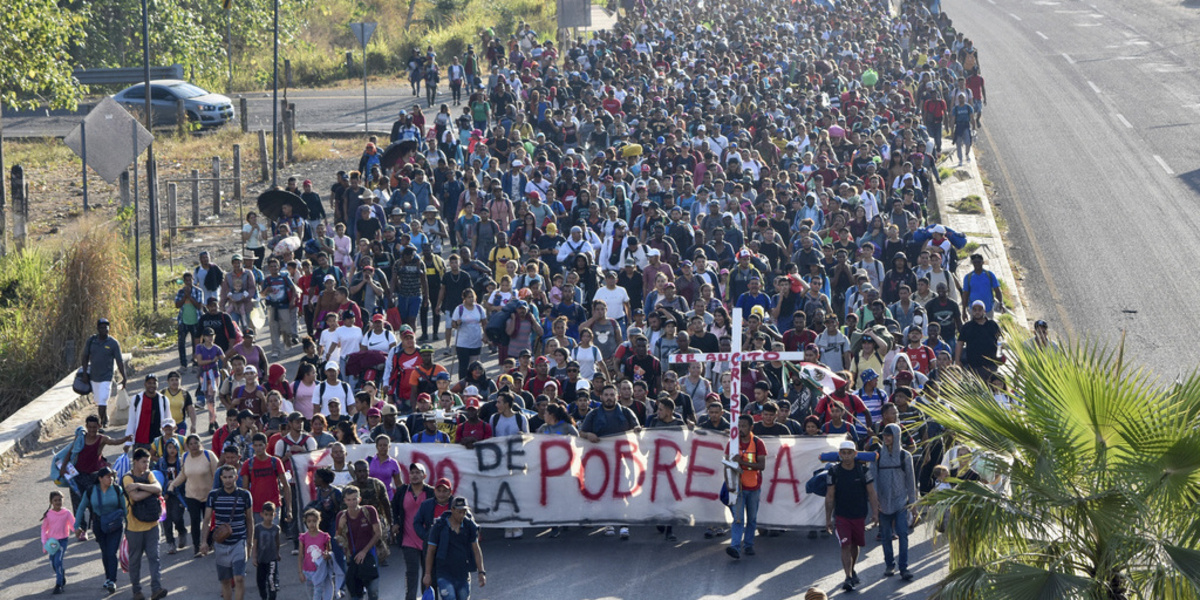On Sunday morning, seven thousand people, most of them from Central and South American countries such as Cuba, Haiti and Honduras, set out together on foot from the city of Tapachula, in southern Mexico, near the border with Guatemala, to form one of the major cities. They are called “migrant caravans” and have already been seen several times in recent years in those areas. Many of them said they decided to join the caravan after being stuck in Tapachula for months, waiting in vain for permission to pass through Mexico: in many cases, these were families with children who had already made the long journey to reach Mexico from their homeland. These are countries that are often very poor or have become dangerous due to political repression and the spread of organized crime.
It is the largest caravan to form in Mexico since June of last year, when a group similar in size set off when US President Joe Biden hosted leaders of American countries in Los Angeles for the Summit of the Americas. Another caravan left Mexico in October, coinciding with a summit organized by the country's president, Andres Manuel Lopez Obrador, to discuss the migration crisis with various regional leaders. A month later, about 3,000 migrants closed the main border crossing with Guatemala for more than 30 hours.
Migrant rights activist Luis García Villagran, who accompanies the caravan, Tell BBC Many people have been gathering in Tapachula for months, because the border with Guatemala is open and about a thousand people cross it every day. “If they had not left Tapachula, the city would have collapsed,” he said. The convoy left at dawn on December 24 and covered about fifteen kilometers in half a day.

Traveling in such large caravans allows migrants to avoid robberies or kidnappings as they pass through some of the most dangerous places in Central America. Thus the logic that these migrations towards the United States have followed for decades has been reversed: they no longer travel in hiding, for example in loaded trucks, or follow the instructions of human traffickers, but rather move in large groups, hoping to make money safely. At the same time, it will be difficult to stop them if they decide to impose a police siege.
In this case, the decision to leave appears to have been prompted by a speech by Mexican President Lopez Obrador, who announced on Friday that he was willing to meet with US Secretary of State Antony Blinken to discuss US concerns about migration from the south. In May, Lopez Obrador agreed to welcome migrants from countries such as Venezuela, Nicaragua and Cuba who had been rejected by the United States. However, the agreement did little to stem migration flows towards the United States: in December, about 10,000 people were detained daily while trying to cross the Mexico-US border. Authorities also suspended cross-border rail traffic to the cities of Eagle Pass and El Paso, Texas, after many migrants were found hiding on freight trains.
Lopez Obrador is also urging the Biden administration to ease sanctions on far-left governments in Cuba and Venezuela, where about 20 percent of migrants heading to the United States come through Mexico. The Mexican president also asks the United States to invest more in development and democratization in Latin American countries, in order to improve living conditions that have led millions of people every year to try to escape for decades.

“Reader. Travel maven. Student. Passionate tv junkie. Internet ninja. Twitter advocate. Web nerd. Bacon buff.”




